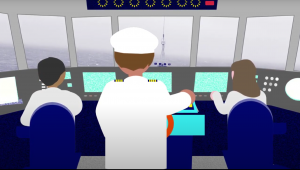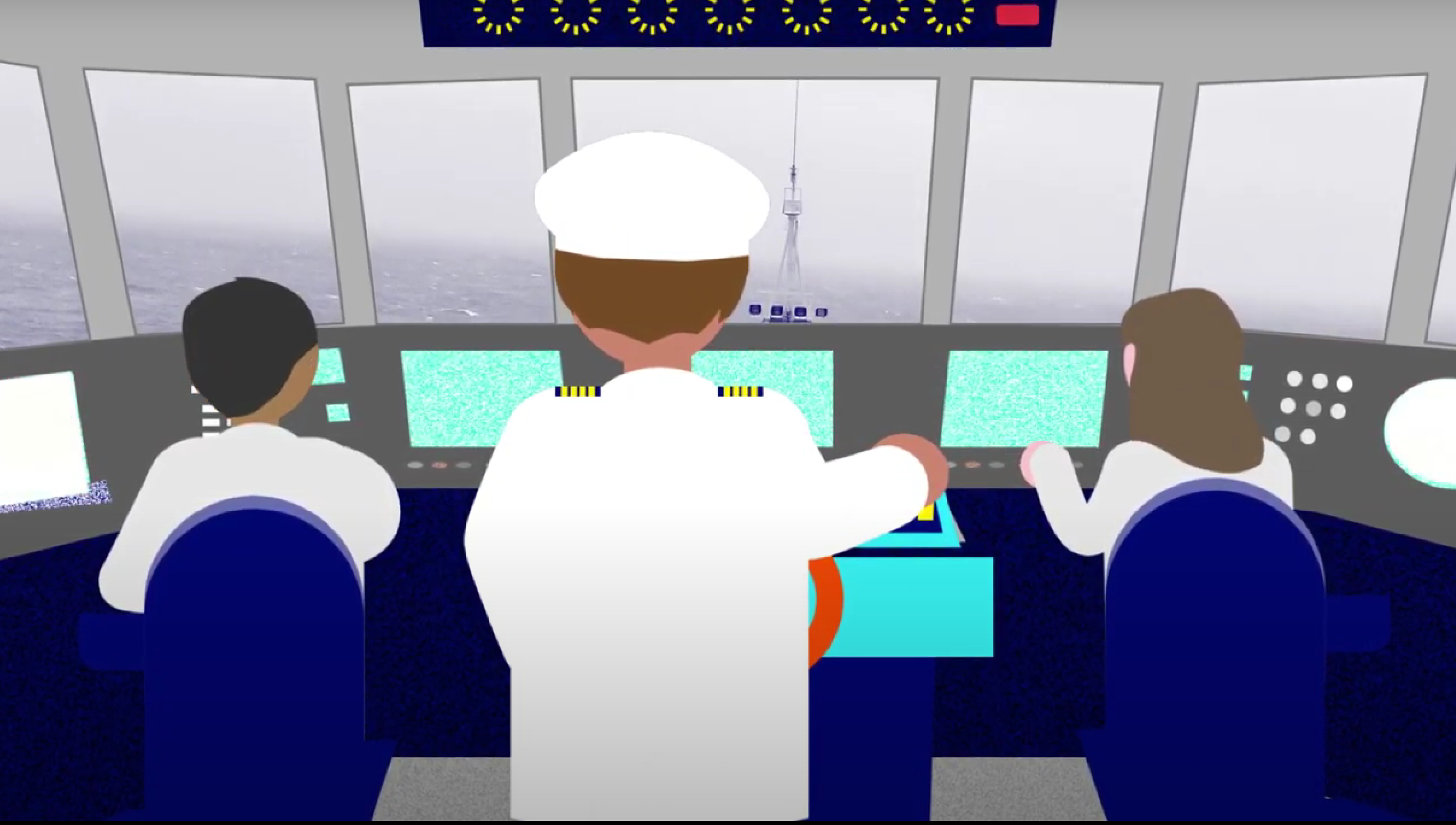Bridge Resource Management (BRM) or Bridge Team Management (BTM) onboard commercial ships refers to the set of procedures, protocols, and tools used by the crew of a vessel to ensure safe navigation and efficient operation of the ship. The bridge is the central command center of a ship where navigation and communication equipment is installed, and the ship is controlled. Effective bridge management is essential to ensure the safety of the crew, the ship, and the environment.
The following are the key components of bridge management onboard commercial ships:
- Navigation: Navigation is the primary responsibility of the bridge crew. They must use all available resources to determine the ship’s position, plan its course, and avoid hazards. The crew uses navigational equipment such as GPS, radar, depth sounders, and charts to maintain situational awareness.
- Communication: The bridge crew must maintain communication with other vessels, port authorities, and emergency services. Communication equipment such as radios, telephones, and satellite communications are used to ensure timely and accurate information exchange.
- Crew Management: The bridge crew must work together as a team to manage the ship’s operations. The captain or officer in charge of the watch is responsible for ensuring that all crew members are aware of their duties and that they are carried out safely and efficiently.
- Risk Management: The bridge crew must identify and manage risks to the ship, crew, and the environment. This involves assessing the weather, sea conditions, traffic, and other factors that could impact the ship’s operations. The crew must also be aware of the ship’s limitations and ensure that it is operated within safe limits.
- Emergency Response: The bridge crew must be prepared to respond to emergencies such as fires, collisions, and man overboard situations. They must know the ship’s emergency procedures, coordinate with other crew members, and communicate with external resources such as rescue services.

In addition to these key components, modern commercial ships use advanced technology and software systems to support bridge management. These systems include electronic chart display and information systems (ECDIS), automated identification systems (AIS), and bridge alarm systems (BAS). ECDIS provides accurate and up-to-date navigational information, AIS helps identify other vessels in the area, and BAS alerts the crew to potential hazards.
Bridge Resource Management (BRM) is a critical concept in ensuring the safe operation of a commercial ship, and involves effective management and utilization of all available resources, both human and technical. BRM principles include a shared view of goals, delegation of responsibilities, and a sense of team ownership in achieving goals.
The effective use of various resources on the bridge, including navigational equipment and available manpower, is essential for maintaining a safe navigational watch at sea. Electronic equipment such as radar, echo sounder, GPS/DGPS, ARPA, gyro compass, and AIS can provide important information to the bridge team, as can charts and nautical publications, environmental factors, electronic charting and display systems, vessel traffic services, and internal and external communication equipment.
In order to effectively implement BRM on a vessel, the Master should consider a number of factors, including passage planning, passage plan briefing, bridge manning, bridge team training, and the Master’s standing orders. The Master should also conduct a thorough exchange with any pilot on board, and hold an end-of-voyage debriefing to review the passage plan’s strengths and weaknesses.
Determining appropriate bridge manning levels is a critical component of BRM, and should take into account factors such as the size and type of ship, number and type of propulsion units and auxiliaries, construction and equipment of the ship, cargo to be carried, frequency and nature of voyages, trading area and waters, and applicable work hour limits and rest requirements. Minimum safe manning levels should be established based on the performance of functions at the appropriate level of responsibility, as specified in the STCW Code.
SOLAS ensures that ship’s crew can deal with various emergencies that may arise by requiring all commercial ships to carry appropriate emergency equipment and to conduct regular emergency drills. On my last ship, we conducted regular fire, abandon ship, and man overboard drills, and ensured that all crew members were familiar with the emergency procedures and equipment. We also conducted regular training sessions to ensure that crew members were up-to-date on the latest emergency procedures and technologies.
Overall, effective bridge management is critical to the safe and efficient operation of commercial ships. It requires a well-trained and experienced crew, effective communication and coordination, and the use of advanced technology and systems to support navigation and risk management.
By: https://maritimeducation.com/

